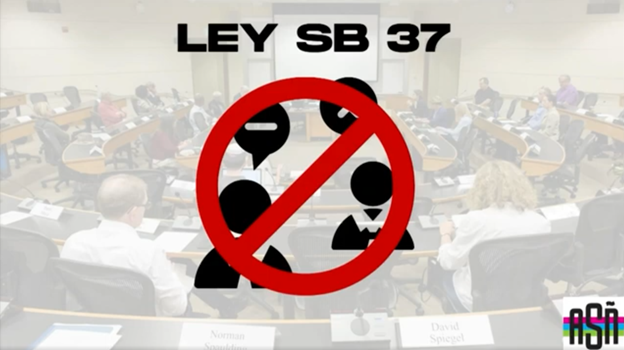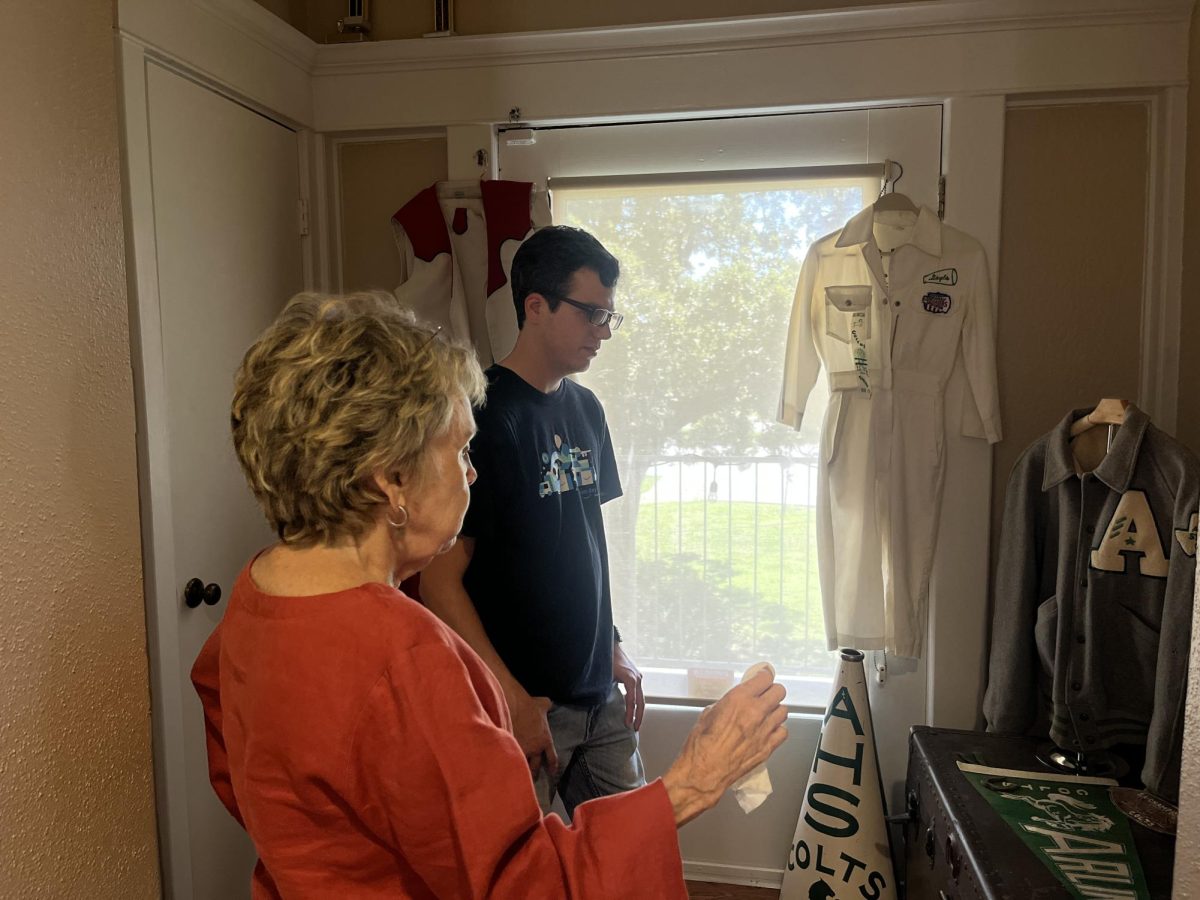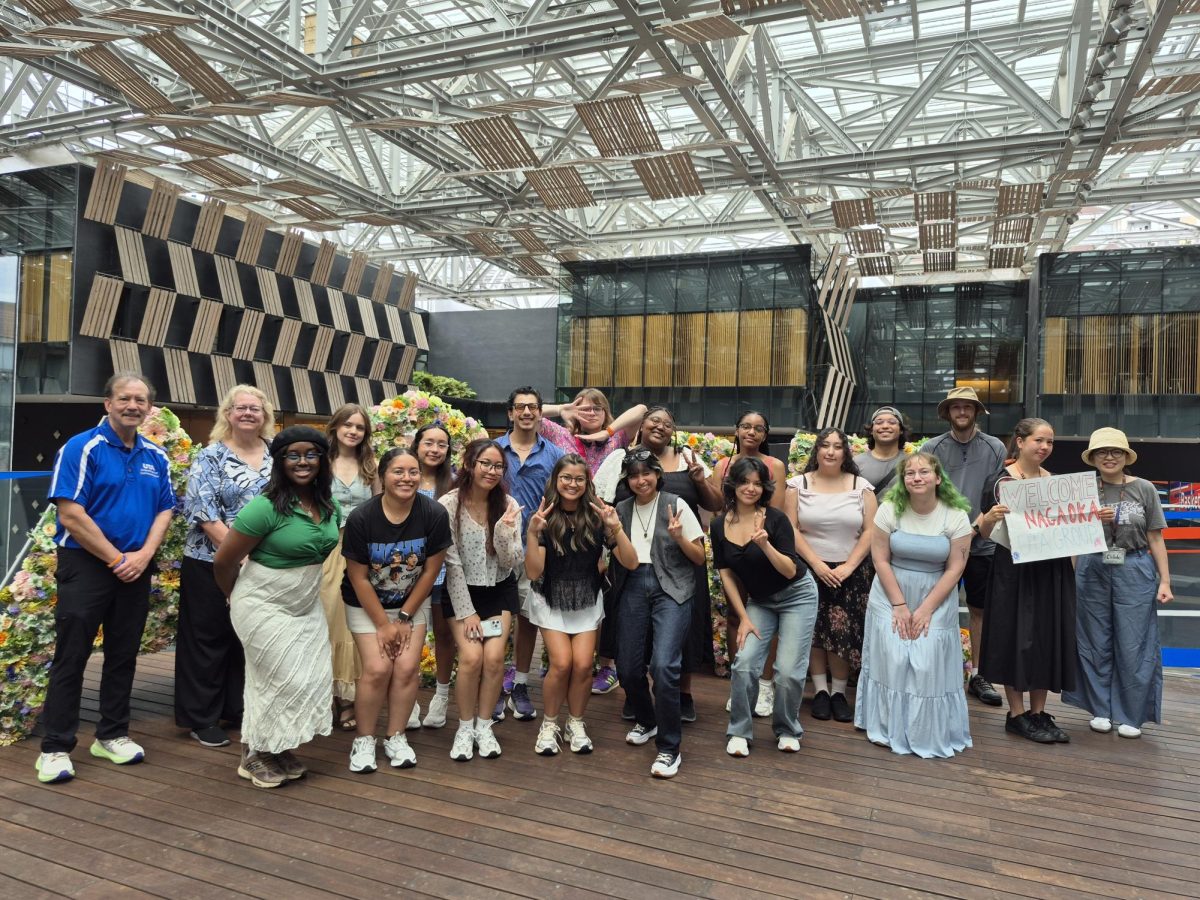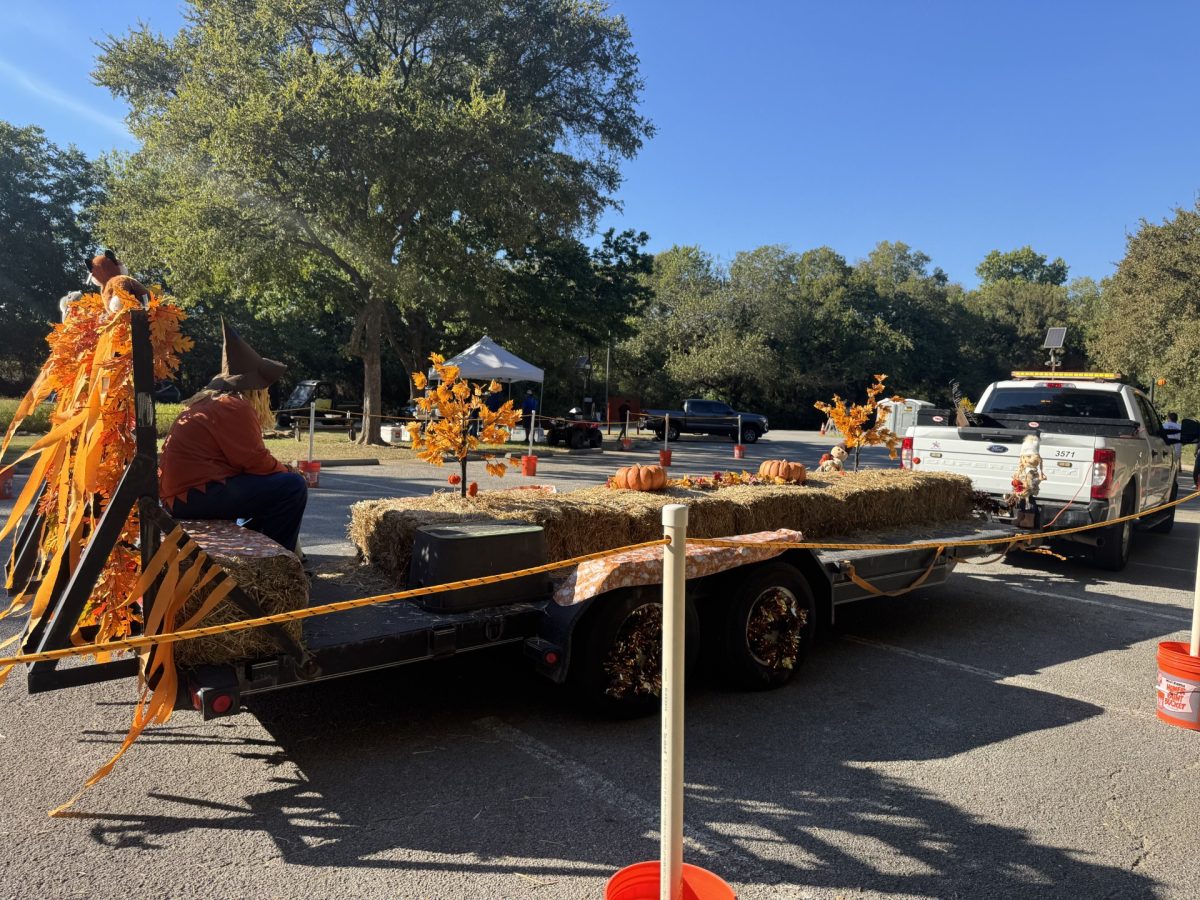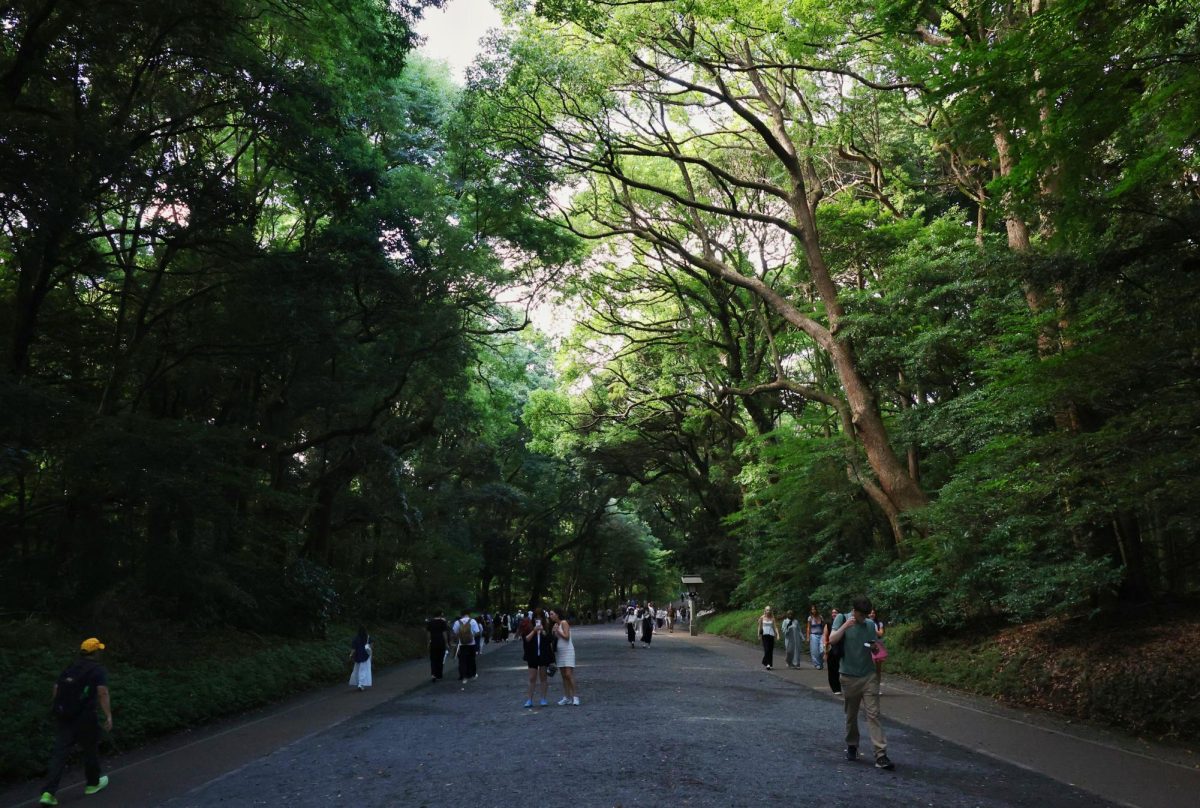ARLINGTON, Texas–Nearly 100 years ago, a Canadian boy saw an orange-winged butterfly. He tracked the butterfly with his eyes. Once the butterfly finally disappeared, he asked himself where it went.
Fred Urquhart eventually grew up to become a zoologist. He began studying the orange-winged monarch butterflies in 1937 and continued to study them for the next 70 years.
Urquhart learned that his orange-winged friends left Canada each fall. If they did not leave, they could never survive the cold, damp Canadian winters.
In 1952, volunteers began to help Urquhart by tagging monarchs as they migrated south each fall. He was curious to know where they went after they left his hometown of Toronto.
Urquhart and his volunteers learned that these monarchs migrated to Mexico each fall, but they were unable to pinpoint their exact destination within Mexico.
In 1973, Catalina Trail and her husband, Ken Brugger, volunteered to help Urquhart find the monarchs.
Trail and Brugger spent four years traveling through the mountains of central Mexico in a Volkswagen bus.
Mystery solved
Trail spent holidays and weekends taking 11-mile hikes through the mountains. Along the way, she would stop to ask the local people if they had seen any butterflies that looked like the pictures she showed them. Nobody ever admitted that they had.
Her efforts finally paid off on Jan. 2, 1975, as she caught a glimpse of millions and millions of monarchs covering the fir trees above her.

Two years after becoming a volunteer, Trail had found the missing piece to the puzzle that had baffled Urquhart and his volunteers for 36 years.
“Interestingly enough, she had no scientific training,” John Watts, an entomologist with Texas Discovery Gardens in Dallas Fair Park, said.
“The peoples of the region knew of these sites for as long as they have lived in the area, yet no one who studied monarchs had taken the time to ask,” Watts said.
Finding these massive colonies of monarchs in the mountains located 60 miles northwest of Mexico City was a major achievement for the world of etymology.
Urquhart wrote an article that appeared in the August 1976 edition of National Geographic magazine.
The article, titled “Discovered: The Monarch’s Mexican Haven,” shared the story of finding the massive monarch colonies located along the border between the states of Mexico and Michoacan. This site has since become part of the 139,019-acre sanctuary known as the Monarch Butterfly Biosphere Reserve.
Monarchs are the only butterfly species in the United States known to make such an annual two-way migration.
This migration brings millions of monarchs through Texas twice each year. Each fall, monarchs migrate south along the Central U.S. Flyway. Each spring, monarchs follow this same flyway north.
Many Texans wait in anticipation each October to see how many monarchs migrate through on their way to the Monarch Butterfly Biosphere Reserve.
Declining numbers
But each year, it seems as if fewer monarchs pass through the Dallas-Fort Worth area on their journeys.
During the late 1990s, the International Union for Conservation of Nature considered placing the monarch butterfly on the endangered species list.
Later reports said that planting milkweed would keep the monarch butterflies from being added to the endangered species list.
Marianna Wright, executive director of the National Butterfly Center in Mission, Texas, said the monarch species is not in danger of extinction. The monarch species is globally secure. Monarchs exist on every continent except Antarctica.
Even so, the transcontinental migration that brings so many monarch butterflies through Texas is considered an “endangered biological phenomenon.”
If threats along the monarch migratory paths are not brought under control, Texans may eventually stop seeing migrating monarchs at all.
Ecological threats
Each year, round-trip migration becomes harder for monarchs because of threats such as chemical abuse, climate change and habitat loss.
The population of monarchs declined dramatically in the late 1990s, mainly as a result of an herbicide known as glyphosate.
During the late ‘90s, large agribusiness firms began marketing genetically modified crop seeds. These seeds allowed farmers to safely kill weeds within corn and soybean fields without fear of damaging the crops.
Widespread and constant use of glyphosate led to the loss of milkweed from corn and soybean fields throughout the Upper Midwest.
Insecticides such as permethrin and malathion that are sprayed by municipalities to kill mosquitoes also contribute to the declining population of monarch butterflies.

The unusual weather patterns that result from climate change are a second threat to the migration and overwintering of monarchs.
Last summer nearly half of the mainland United States experienced drought.
Prolonged drought affects the availability of nectar-producing plants needed by migrating monarchs. Lack of nourishment during migration means that the monarchs may not be able to survive the long winters of Mexico.
As winters have become increasingly colder, monarchs overwintering in the Reserve face more intense early freezes and frequent snowstorms. Three El Nino storms have been known to kill as many as 80% of the overwintering population at one time.
Climate change also alters the timing of migration. Natural selection now requires that the monarch butterflies sync migration with the changing seasons.
Loss of habitat in both Mexico and the United States is a third threat to the migration of monarchs.
Fires, forest devastation and unorganized tourism within the Monarch Butterfly Biosphere Reserve have led to the loss of many trees within the forest. The loss of trees makes monarchs more susceptible to temperature extremes.
These changes within the Reserve affect not only monarch butterflies but also the 22 million residents of Mexico City dependent on the Reserve for their drinking water.
The Monarch Butterfly Biosphere Reserve is also home to 132 species of birds, 56 species of mammals, 432 species of vascular plants and 211 species of fungi.
In the United States, repurposing land for agriculture and urbanization has destroyed 90% of the grassland areas along the U.S. Central Expressway.
Urbanization consumes grassland habitat at a rate of 6,000 acres per day.
Butterfly havens
Amy Monroy is a horticulturalist with the Heard Natural Science Museum & Wildlife Sanctuary.
“The most important thing that we can do is to protect the land from development,” Monroy said.
Texas has several parks, gardens and venues committed to protecting monarch butterflies from urban development and other common threats.
Three of these venues are the National Butterfly Center, the Heard Natural Science Museum & Wildlife Sanctuary and the Texas Discovery Gardens.
The National Butterfly Center is a 100-acre wildlife center and native species botanical garden created by The North American Butterfly Association in Mission, Texas. The garden and the national organization both focus on the conservation and study of wild butterflies in their native habitats.
The Heard Natural Science Museum & Wildlife Sanctuary in McKinney, Texas, is a 289-acre wildlife sanctuary that serves as a haven for more than 240 animal species and nearly 150 different types of plants. The Native Texas Butterfly House and Garden highlight native species of butterflies among the host plants that naturally attract them.
Texas Discovery Gardens, located in Dallas Fair Park, is a 7.5-acre organic garden. Facilities include an outdoor native butterfly habitat and the Rosine Smith Sammons Butterfly House and Insectarium, a two-level indoor butterfly house and insectary.
Chip Taylor and Monarch Watch
In 1992, Chip Taylor—widely regarded as the guru of monarch butterflies—began a campaign to transform roadsides into habitats suitable for monarchs and other pollinators. That year, Taylor, a University of Kansas professor in the Department of Ecology and Evolutionary Biology, founded Monarch Watch to foster monarch education, research and conservation.
At the time, there were more than 10 million acres of roadside in the United States.
He said that planting wildflowers and other native vegetation along highways could help support the health of butterflies, bees, songbirds and other wildlife.
Taylor used Interstate Highway 35, a highway leading roughly along the Central U.S. Flyway used by both birds and butterflies during migration, as an example of potential habitat restoration. Some people now refer to this highway as the Monarch Highway.
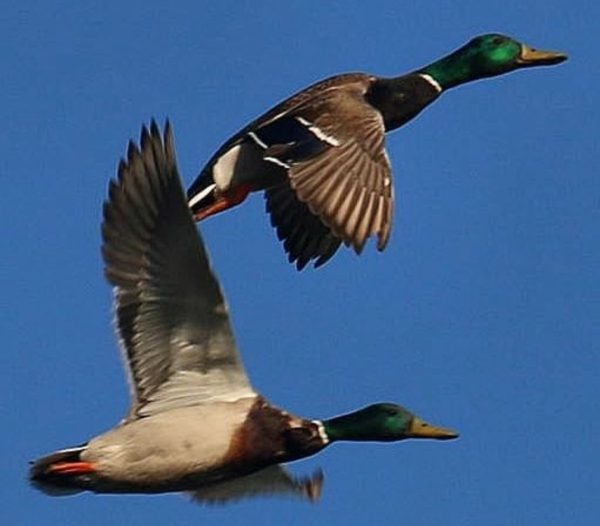
But critics claim that creating roadside habitats is not necessarily a good idea for the following three reasons: monarch death caused by moving vehicles, discharge of carbon monoxide from cars and high ozone concentrations near highways.
In 2015, Monarch Watch created the Monarch Waystation program.
Monarch Watch began this program in hopes of inspiring individuals and small groups to create butterfly gardens and pollinator habitats.
Many states, businesses, groups and individuals have since embraced this idea.
As of Sept. 19, 2023, the number of registered Monarch Waystation habitats worldwide was 45,429.
The Mayors’ Monarch Pledge campaign has also led to the creation of butterfly habitats in municipalities across the country.
Nationally, 365 mayors have signed onto the program initiated by the National Wildlife Federation.
Mayors in Tarrant County who have signed onto the program include the mayors of Arlington, Dalworthington Gardens, Everman, Fort Worth, Grand Prairie, Grapevine, Kennedale, Mansfield and Westlake.
Native plants
The Tarrant County chapter of the Native Plant Society of Texas has worked with many of these cities as waystations were established. This organization will also work with families, places of worship, schools, and individuals as they create their gardens, according to Tom Domke, president of the Tarrant County chapter of the Native Plant Society.
The Tarrant County chapter of the Native Plant Society of Texas has worked with the City of Arlington to establish a list of plants that are approved for city landscaping and use in public spaces.

This list is a good reference for Arlington residents interested in starting their gardens and waystations.
“If we manage to save the monarch migration, it’s going to be through individual action, people acting on any size piece of land they have influence over and simply planting wildflowers for nectar and native milkweeds,” Domke said.
The Native Plant Society of Texas encourages the use of native plants for many reasons.
Native plants have evolved with the wildlife of a given area for many years, meaning that these plants can support local wildlife better than non-native plants.
Native plants also are more likely to thrive during the searing hot summers and long periods of drought found in Texas. Most non-native plants typically wither under these weather conditions.
Non-native plants can also become invasive and destroy natural habitats.
A prime example of an invasive non-native plant is the kudzu vine found growing almost everywhere in the Deep South.
Kudzu was originally imported to the U.S. from the Far East in the late 19th Century as an ornamental garden plant. But residents of the American South chose to use it for erosion control and cattle feed as well.
Kudzu has since spread throughout the South to the point where it now covers millions of acres in the southeastern United States. Kudzu strangles trees. In large cities, kudzu covers and overwhelms abandoned buildings, empty lots and fences.
“Just watering a little home patch of flowers turns out to be important in a dry fall, where there may not be so many flowers in the landscape,” Domke said.
Once these gardens are established, the gardens can be certified through Monarch Watch, the North American Butterfly Association and the National Wildlife Federation.
The damage of modern life
Other things that can help migrating butterflies and wildlife generally are recycling, composting, shopping more conscientiously and conserving electricity.
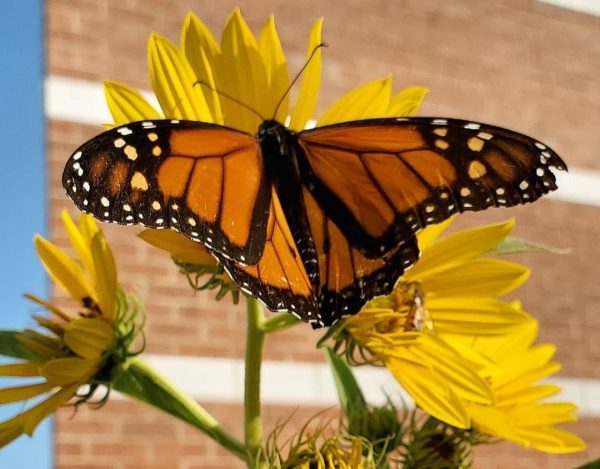
“The way we live now, based on our rapid expansion of consumption, is the most lethal weapon unleashed on wildlife,” Monroy, the Heard Museum horticulturist, said.
Wright, the executive director of the National Butterfly Museum, agreed, noting that protection of migrating butterflies depends upon more than growing butterfly-friendly plants.
“If people in DFW want to continue to enjoy this iconic species, they need to do MORE than plant milkweed,” Wright said.



